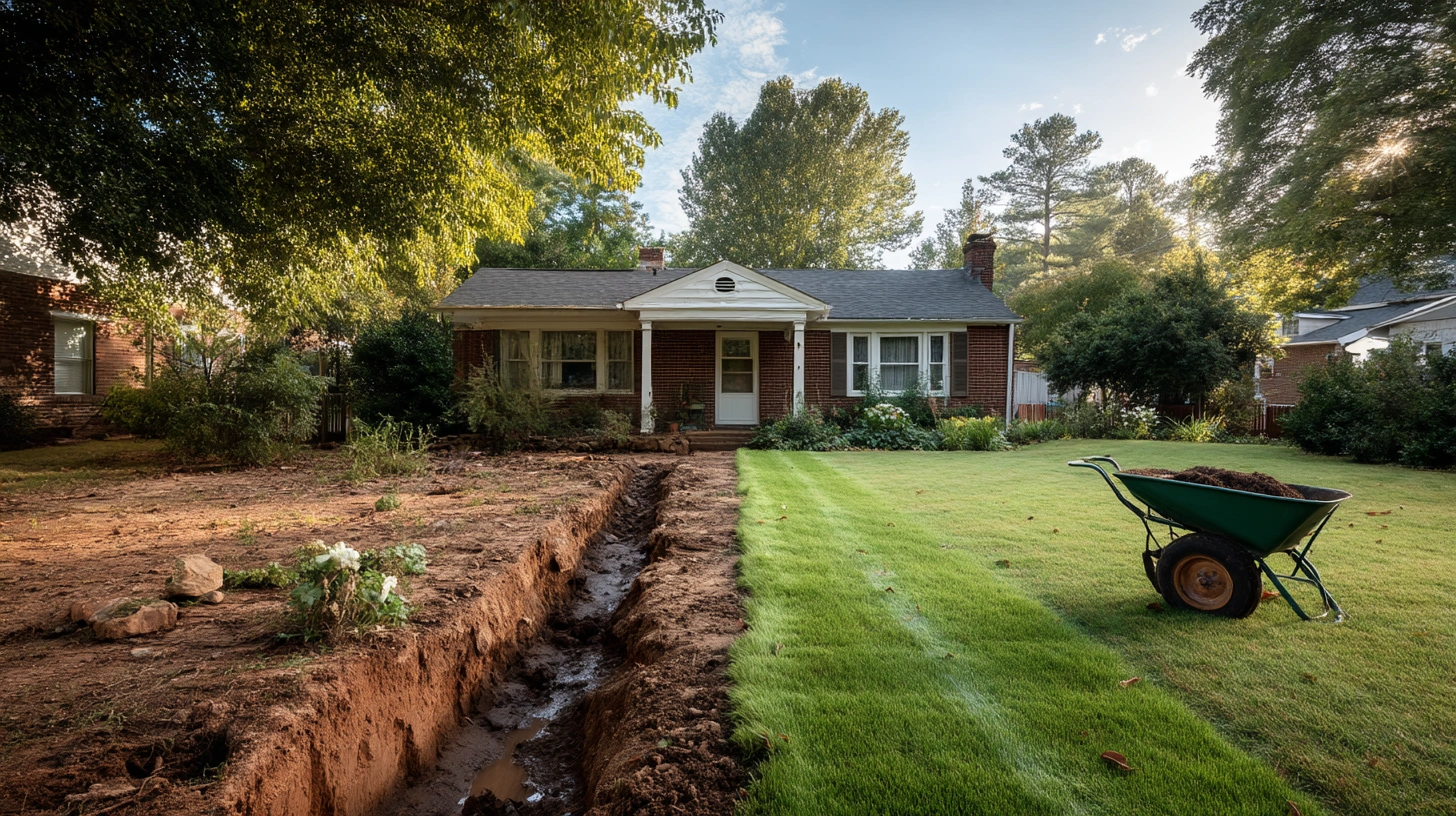Sod Prep in Raleigh NC: From Red Clay to Lush Lawn

Transform Raleigh's red clay into a healthy, vibrant lawn. Expert sod prep tips cover soil testing, weed control, erosion solutions, and the right grass choices.
Sod Prep in Raleigh NC: From Red Clay to Lush Lawn
Introduction
If your Raleigh lawn is more patchy red clay than lush green turf, you're not alone. Clay-packed Piedmont soil can resist water, choke out grassroots, and leave you battling weeds season after season. But with the right approach to sod prep in Raleigh NC, you can flip the script and grow a lawn you're proud of.
In this guide, we'll walk through every step--from a soil test and organic amendments to grading, erosion control, and final finishing touches. I've helped countless homeowners turn that stubborn clay into a solid foundation for fresh sod, and I'll share the regional tips that make all the difference here in the Triangle. Whether you're laying Tall Fescue in the fall or Bermuda in late spring, you'll learn when to act and exactly what to do for lasting results.
Why Raleigh's Red Clay Demands Special Sod Prep
Raleigh's signature red clay is dense and nutrient-poor by nature. Without proper preparation:
Water pools or runs off, denying roots the moisture they need.
Grass struggles to establish, leaving space for weeds to take over.
Heavy rains strip away topsoil, worsening compaction and erosion.
A simple roll of sod over untreated clay often leads to patchy results. By tackling pH balance, organic matter, and grading up front, you'll create a welcoming environment for your new turf.
Ready to transform your lawn?
Get personalized AI guidance for the perfect lawn. Download Grassmaster Gus now!
Step-by-Step Sod Preparation for Clay Soil
Follow these targeted steps to prep your lawn for sod installation in North Carolina's clayey turf zones.
1. Test and Amend Your Soil
A proper soil test is the blueprint for success. NCDA&CS offers free testing through November: get pH, phosphorus, potassium, and micronutrient readings.
Target a pH of 6.0-7.0 for most turfgrasses.
Add lime or sulfur per test recommendations to correct acidity.
Incorporate compost or quality topsoil (2-4 inches) to improve structure.
2. Eradicate Weeds Completely
Weeds are turf's fiercest competition. Kill them off before you lay sod:
Apply a non-selective herbicide (e.g., glyphosate) over stubborn patches.
Wait 7-14 days, then rake out dead material.
Spot-spray any survivors and re-rake--this ensures a truly clean slate.
3. Grade, Amend, and Improve Drainage
Loose, well-graded soil is non-negotiable:
Till to a depth of at least 3-4 inches.
Blend in organic matter evenly--avoid dumping sand on clay or you'll create a brick-like layer.
Grade surface at a 2-3% slope away from foundations to prevent puddles.
For steeper areas, consider small terraces or check dams to slow runoff.
4. Control Erosion Before You Sod
Without protection, red clay can wash away:
Lay straw or erosion blankets if heavy rain is forecast.
Install a French drain or swale in chronically wet spots.
Plant temporary cover crops (e.g., rye) on slopes to hold soil until you're ready to sod.
5. Final Soil Smoothing and Moisture Check
Before the truck arrives:
Drag a landscaping rake or mat to level the surface and close any gaps.
Lightly mist the soil--standing water signals poor drainage that needs another tweak.
Firm the soil gently with a roller or hand tamper; avoid over-compaction.
Choosing the Right Sod for Sun and Shade
In Raleigh's climate you can go warm-season or cool-season, but match the grass to its spot:
Full Sun: Bermuda or Zoysia thrive in heat but need full sun.
Moderate Shade: Tall Fescue handles partial shade and stays greener in winter.
Deep Shade: St. Augustine or fine fescues are your best bet under mature trees.
Talk to local sod farms about varieties bred for clay tolerance and regional pests.
Timing Your Sod Installation in Raleigh
Seasonal windows are crucial:
Tall Fescue: Early September through early November.
Bermudagrass/Zoysiagrass: Late May through early July.
Avoid laying sod on frozen, bone-dry, or waterlogged ground. Check the 7-day forecast and aim for mild temperatures with some rainfall to help roots settle in.
Post-Sod Care for a Lasting Lawn
A new lawn needs TLC in the first 4-6 weeks:
Watering: Daily light soaks (about 1/3 inch) to keep roots moist but not flooded.
Mowing: Reach 3-3.5 inches before the first cut; only remove the top third of blade length.
Fertilizing: Hold off for 4-6 weeks, then apply a starter fertilizer tailored to your grass type.
Aeration & Topdressing: Plan annual aeration and a light compost topdress to maintain soil health.
Conclusion
Proper sod prep in Raleigh NC isn't just a quick fix--it's an investment in your lawn's future. By testing and amending red clay, eradicating weeds, grading for drainage, and choosing the right grass at the right time, you'll set the stage for a dense, green yard that fights off erosion and weeds on its own.
Roll up your sleeves, grab that soil test kit, and let's turn even the toughest clay into a turf you can brag about. With these regional tips in your playbook, your Raleigh lawn will be the envy of the neighborhood--one perfectly laid roll at a time.


